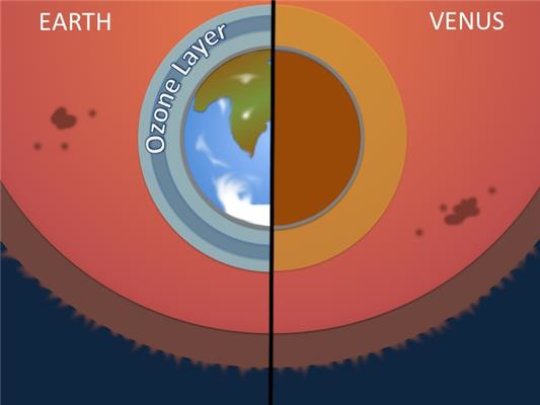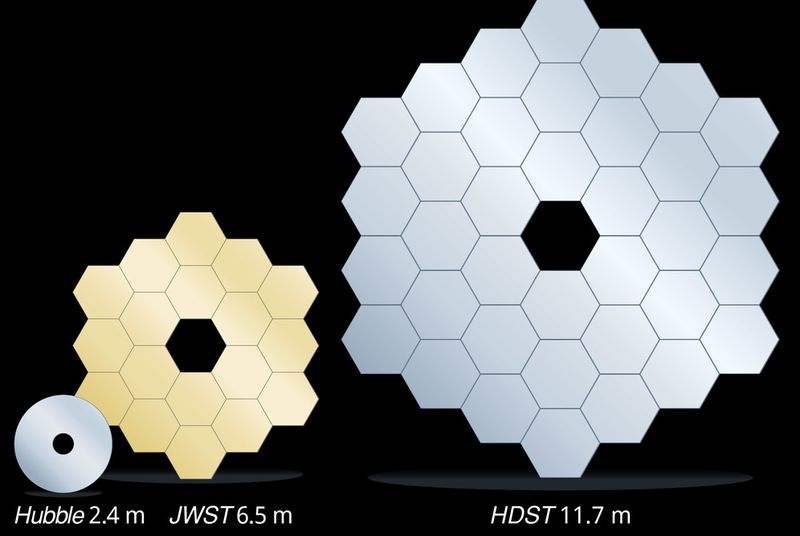The new space telescope to replace the telescope them. Hubble will launch in 2018

The difference in the atmospheres of Earth and Venus
on July 8 in the Royal Space Society , a presentation of the new space telescope took place , which should soon be on duty instead of the good old telescope named after Hubble. The James Webb Space Telescope ( JWST ) is due to enter orbit in 2018. He will study the universe in the infrared. According to scientists, JWST will be able to distinguish the presence of the atmosphere in some exoplanets.
The Kepler telescope, whose primary task is to search for exoplanets, has already discovered more than 2000 of them. But the data obtained from it cannot say anything about the potential suitability for life of these distant worlds. Scientists have been able to establish the composition of the atmospheres of several gas giants, analyzing changes in the light of stars passing through their atmosphere. This measurement is made at the moment the planet passes in front of the star.
But these changes are extremely difficult to track - only 1/10000 of the starlight passes through the atmosphere. And to study with the help of existing tools the small terrestrial planets in this way and even more unrealistic.
The new JWST telescope will be able to see the atmospheric details of medium-sized planets - however, those that will revolve around stars with less brightness than the Sun.
Astronomer Joanna Barstow explained during the presentation that if we take a system where there will be a planet similar to Earth and a planet similar to Venus, and the star of this system will be a cold red star, then JWST will be able to see the difference between the two planets. The fact is that the Earth has an ozone layer, which is formed during the interaction of solar radiation and oxygen molecules. In the process of converting oxygen to ozone, characteristic signals are emitted that the new telescope can detect.
Dr. Barstow clarified that the telescope will not be used only to observe exoplanets - he will find work in other areas of astronomy.
The original JWST project was called the “New Generation Space Telescope,” but in 2002 it was renamed in honor of NASA’s second director, James Webb (1902-1992), who headed the agency in 1961-1968.
James Webb will have a composite mirror 6.5 meters in diameter, three times the diameter of the Hubble mirror, with a collecting surface of 25 m 2 and a sun shield the size of a tennis court. The telescope will be placed at the Lagrange point L2 of the Sun - Earth system.
JWST has not yet managed to enter orbit, and tireless scientists are already proposing a new projecthe is being replaced by the High Definition Space Telescope (HDST) with a 13-meter diameter mirror. Its main task will be precisely the observation of exoplanets in order to search among them potentially suitable worlds for life.

Comparative dimensions of Hubble mirrors, the future of JWST and the proposed HDST
